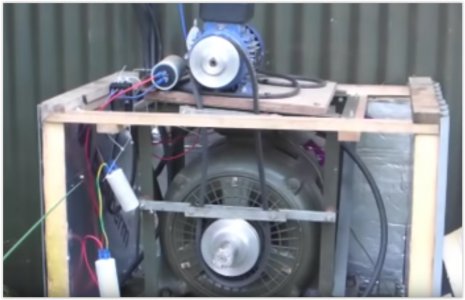- Joined
- Oct 13, 2014
- Messages
- 9,577
Hum, it looks like it is essentially the same circuit except it uses one hot phase and a neutral going into the idler motor (instead of two hot legs) and the center tapped neural coming out, that makes sense now. As mksj said, the amps are your biggest problem. That chart is for supplied three phase power. You are creating 3 phase power from a single phase 240V source, so that times 40A gives you a total of 9,600 watts. A Horsepower is about 746 watts, so that only gives you around 12 theoretical Hp you can run, including the RPC and assuming you have nothing else to power such as lights etc. The term "generate" is somewhat misleading the idler motor doesn't create any extra power it only transforms the supplied power into the ghost phase. Think of it as a rotary transformer. The energy output can never be greater than the energy input. So with the RPC you can run a 5 hp motor, maybe a 7.5 hp. The RPC system uses up some power running the idler, I think is a little shy of 10% so the system will be around 90% efficient. On the other hand, VFDs are more efficient (I think around 97%), so you'd be able to squeeze out a little more usable energy maybe you could get a10hp. motor running but that would be really pushing it and of course not much else....

